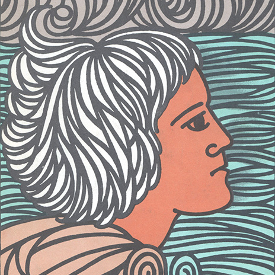
A little while ago, I promised myself and my readers to have a look at fantasy art outside the—largely—European tradition. One danger of doing this is that I don’t know an awful lot about some of the traditions I hope to look at. Another danger is that unlike the unicorns and elves, the dragons, mermaids and witches which populate European fairy tales and fantasy literature, some of the entities I will be looking at are being venerated in a religious context to this day. The borders between fantasy art and religious art are very fluid, and it is quite possible that some of what I show and write—or the fact that I do it in this context—may offend some of my readers.
I ask pardon in advance: my aim is to broaden the spectrum of the art I look at in this blog, not to provoke or patronize. Anything that might offend you, please put it down to ignorance, rather than disrespect. And please feel free to enlighten me in the comments!
This is the fourth installment of my look at art inspired by the various Afro-American religions—Santería and Voodoo, as practiced in the Caribbean and the Bayou—and South American Candomblé and Umbanda, which I remember well from my teenage years spent in southern Brazil.
All these syncretic religions originate from African religious practices. African people were not only uprooted and forcefully resettled, they were also forcefully converted to Christianity — in most cases, Catholicism — and so they grafted their own deities on to Catholic saints.
The resulting religions and spiritual practices are alive and healthy to this day, and present a fascinating mixture of European and African influences. Although they are independent religious practices, they do share some of their main deities. The legacy of the Yoruba people is particularly prominent—a number of the main deities can be traced back to what is now Nigeria.
Oshun or, in her Brazilian spelling, Oxum, is the entity who represents all the traditionally feminine values: beauty and gentleness, kindness and generosity, diplomacy, seduction and sexuality, fertility, wealth and abundance. Her colour is yellow, which also links her to the warmth of the sun – or that of a beautiful smile. She loves to dance, and her appreciation of beauty makes her a patroness of the arts.
Like Yemanjá, whom I introduced in an earlier blog and with whom she shares some traits, in America she is venerated as the Virgin Mary – in her aspect of Our Lady of Charity. And like the original Yoruba Yemoja, she is also a river goddess. Her attributes are a mirror and a fan made from peacock feathers – symbols of female vanity which link her to the Greek Hera and Aphrodite.
But Oxum isn’t all gentleness and submission. She is also associated with witchcraft – like the Russian Baba Yaga, her tools are the mortar and pestle. The Cuban Mama Chola, who traces her origins to the Congo rather than West Africa, shares a number of traits with Oxum.
Representations of Oshun/Oxum are particularly plentiful on DeviantArt. But strangely enough, unlike some of the other female entities in the pantheon, and despite her explicit association with sexuality and seduction, she does not get the naked balloon boob treatment – at all. Obviously, this is reserved for some of her more “manly” sisters! I have a hunch that there is a worthwhile subject for feminist analysis right here.
In fact, most of the artists who chose to represent her are women, and seem to see her as an ideal to aspire to. Interesting is also the geographical spread: while in my previous blog posts in this series, most or all artists either lived in Latin America or the Caribbean, or were linked to this culture by their ethnic background, this time I have included two artists from Eastern Europe: one from Estonia, one from Croatia. The first chose to emphasize this deity’s gentleness, the second her nature as a witch.
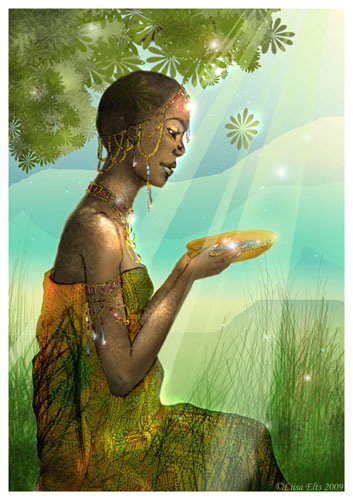
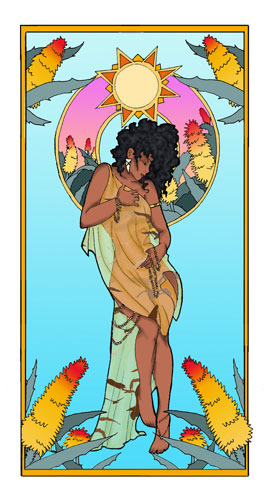

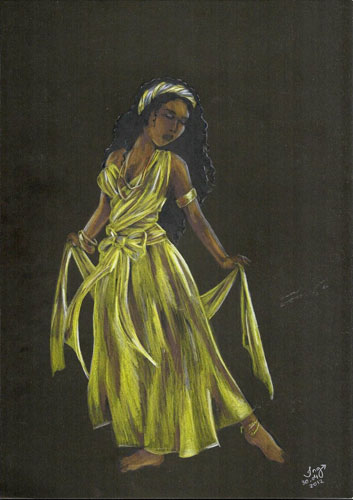
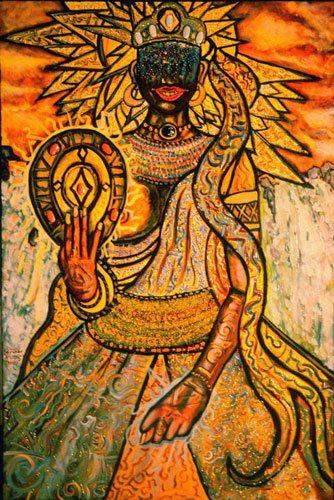
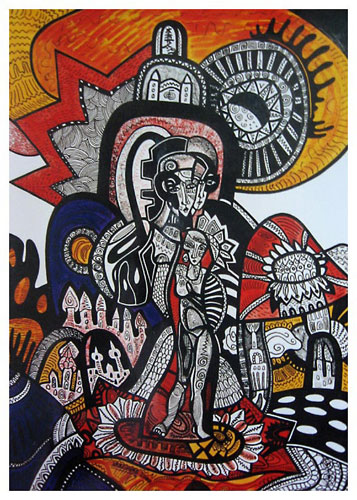

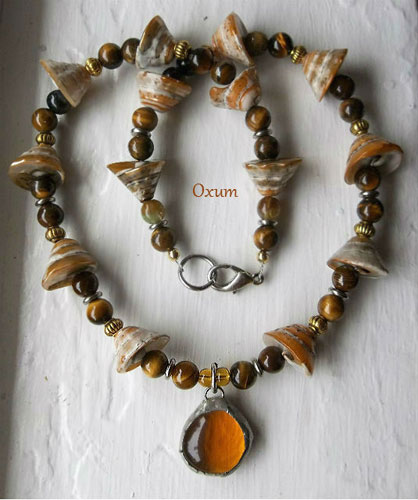
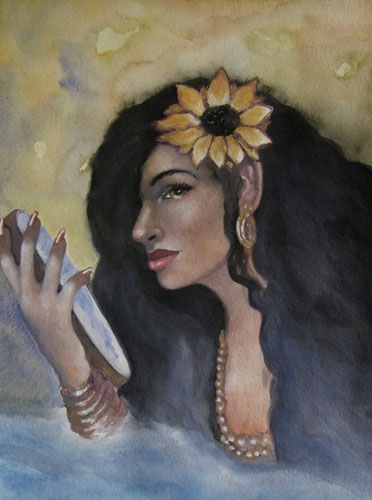
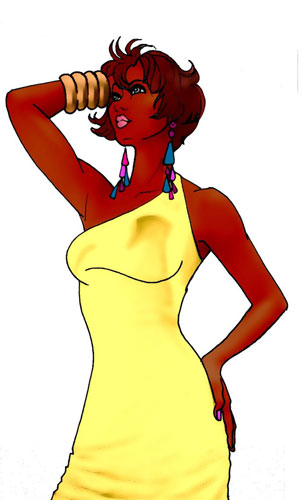
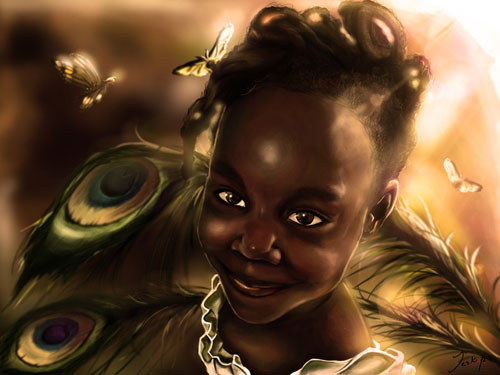
Daughter of Oshun, by Sean Abbott a.k.a Test – MacabreXS on DeviantArt
All images are copyright the respective artists, and may not be reproduced without permission.



